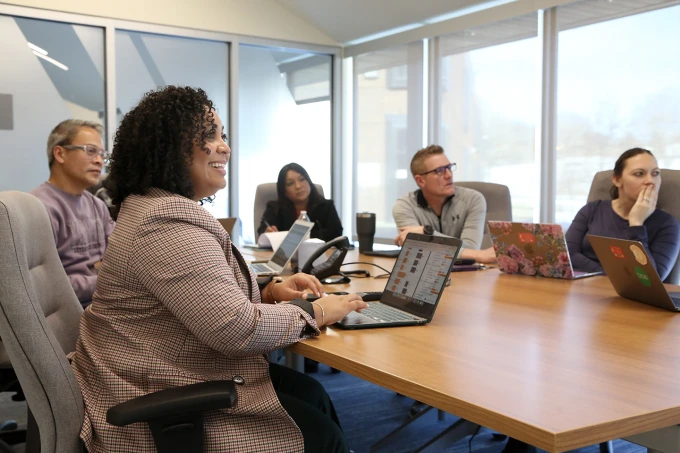District Dilemmas: Solutions for Common Challenges Facing School Leaders
District leaders across the nation face mounting challenges, from staffing shortages to budget constraints. Here's how superintendents and administrators are responding with innovation and resilience.
In an evolving educational landscape, district leaders are navigating a host of complex challenges—from declining enrollment and teacher shortages to budget constraints and community mistrust. Superintendents, school board members, and administrators across the United States are developing strategic solutions to ensure their schools not only survive but thrive. One of the most pressing issues confronting districts is a persistent shortage of qualified educators.
The COVID-19 pandemic exacerbated an already troubling trend of teacher attrition, and many districts have struggled to fill open positions. To combat this, some districts are expanding grow-your-own teacher programs that offer support and certification pathways to paraprofessionals, community members, or recent graduates. In Tennessee, the Clarksville-Montgomery County School System has launched a residency initiative that allows college students to gain hands-on classroom experience while working toward licensure.
Simultaneously, pay increases and mental health supports are being offered to improve retention. Financial strain is another obstacle district leaders must manage. With pandemic-era federal aid set to expire, many districts face steep budget cliffs.
Leaders in Philadelphia, for instance, are conducting zero-based budgeting reviews to prioritize programs with the highest student impact. Others are consolidating campuses, cutting under-enrolled classes, and forming regional service cooperatives to reduce overhead costs. In rural states such as Montana and North Dakota, shared services agreements are becoming common, allowing smaller districts to jointly employ specialists like school psychologists or IT directors.
Another common dilemma is declining enrollment, especially in urban and rural districts. Factors such as lower birth rates, migration, and competition from charter and private schools have forced public school systems to adapt. Los Angeles Unified School District, for example, has introduced magnet programs focused on STEM, the arts, and global studies to attract new families.
In Michigan, the Kalamazoo Promise scholarship has served as a retention strategy by offering free college tuition to district graduates, a move that has stabilized student numbers and increased public support. School safety remains a top priority. Following a rise in school-based violence and safety concerns, many district leaders are rethinking traditional security measures.
Rather than solely increasing the number of school resource officers, some districts are investing in community-based mental health resources and implementing restorative justice practices. In Denver Public Schools, leadership has prioritized trauma-informed approaches that de-escalate conflict and keep students in the classroom. Additionally, technological solutions such as AI-powered threat detection systems and anonymous tip lines are gaining popularity.
Community trust, especially in historically marginalized areas, is also essential for district success. District leaders are working to rebuild relationships through transparency and consistent engagement. In Minneapolis, where racial disparities in education have drawn national attention, district officials have begun holding regular “listening tours” to hear directly from students and families.
Similarly, many districts are hiring diversity, equity, and inclusion (DEI) officers and forming parent advisory councils that reflect the cultural and linguistic diversity of their schools. Adapting to shifting academic expectations is another challenge. State and federal standards are in flux, and districts must ensure that curriculum and instruction meet evolving benchmarks.
Superintendents are investing in professional development for educators and implementing real-time assessment tools that provide actionable insights into student progress. Technology integration, especially post-pandemic, is key. Districts like Miami-Dade and Dallas ISD have created blended learning models that combine traditional instruction with digital platforms to personalize education and bridge the digital divide.
Mental health and wellness for both students and staff have emerged as vital priorities. In response, districts are embedding social-emotional learning (SEL) into everyday instruction and expanding access to school-based therapists and counselors. For example, the Austin Independent School District has partnered with local nonprofits to embed full-time mental health professionals in several campuses.
Additionally, leaders are emphasizing staff wellness by offering mindfulness sessions, reducing unnecessary paperwork, and recognizing teachers publicly for their contributions. Leadership turnover is another significant issue. The average tenure for superintendents in large urban districts is just over three years.
To counteract this instability, school boards are focusing on leadership pipelines, offering mentorship programs and succession planning. The Houston Independent School District has implemented leadership academies to groom future principals and district executives from within. Moreover, performance-based contracts and community scorecards are helping align leader goals with long-term district vision.
School infrastructure is also under scrutiny. Many districts are operating out of aging buildings that require costly repairs or modernization. Federal initiatives like the Infrastructure Investment and Jobs Act have provided some relief, but gaps remain.
Forward-thinking districts are conducting comprehensive facilities assessments and seeking bonds or local funding to upgrade HVAC systems, install solar panels, and ensure ADA compliance. In places like Portland, Oregon, sustainability and safety are being addressed simultaneously by constructing green school buildings that serve as community hubs. In terms of instructional equity, districts are using data to identify gaps in academic performance, disciplinary action, and course access.
Using tools like equity audits and dashboards, districts like Oakland Unified and Baltimore City Schools are targeting interventions toward schools and students most in need. Curriculum audits are also helping to remove bias and ensure inclusive teaching practices. The expansion of dual-language programs, early college high schools, and access to advanced placement courses is supporting historically underserved populations.
Lastly, the importance of student voice cannot be overstated. Successful district leaders are creating formal pathways for student input through advisory boards, leadership councils, and participatory budgeting initiatives. In Chicago Public Schools, students have helped shape district policy on mental health and climate change, creating a culture of shared ownership and civic engagement.
In conclusion, while district leaders face a range of dilemmas—from personnel shortages and fiscal challenges to infrastructure decay and community skepticism—the most successful responses are rooted in proactive planning, authentic engagement, and evidence-based innovation. These leaders are redefining what it means to lead in education today, using data, empathy, and collaboration to transform obstacles into opportunities for growth and resilience.
28th july 2025



